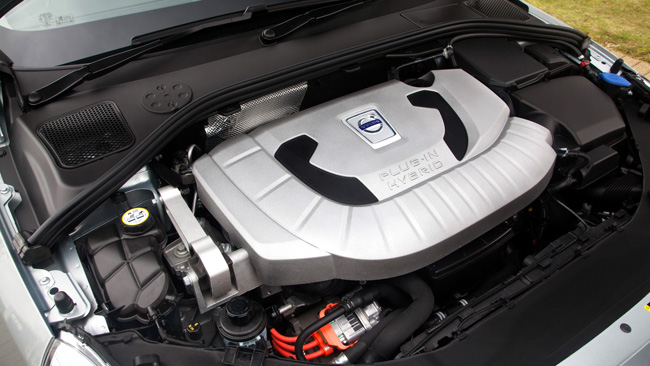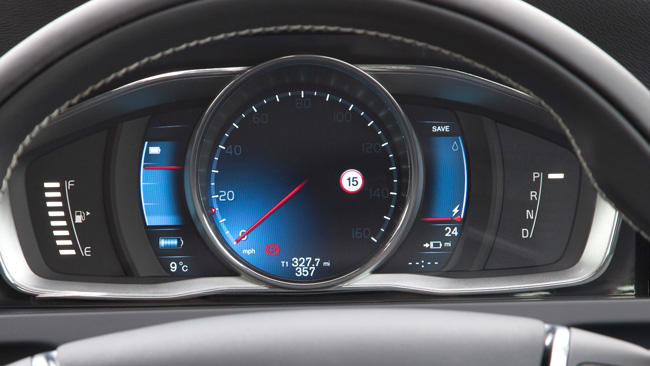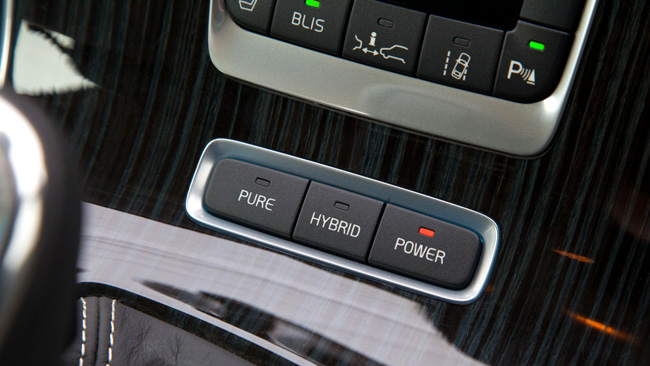This article is more than 1 year old
Volvo V60 Plug-in Hybrid: Eco, economy and diesel power
A 143mph 4-wheel drive electric estate car? Oh yes
Wheelie wierd: When your car picks its own drive
The idea of driving a car that at any given moment may be operating in FWD, RWD or AWD may give some of you cause for concern but to be perfectly honest the automatic gearbox, the suspension and their associated computer systems do a good job of disguising just how the V60 is being powered at any given moment.

There’s a 2.4-litre turbodiesel under the bonnet
The majority of the time the average driver will neither know nor care how the V60 is being propelled, the only clues being that either everything is deathly quiet, meaning electric drive, or you’re not stuck in a field, revealing all-wheel drive. To help maximise electric-only range there is handy hybrid power meter in the binnacle: it’s a very simple graphic that shows you how hard you can accelerate before the diesel motor has to fire up.
Charging the V60 couldn’t be easier. The standard connector is located behind a panel in the front left wing and can charge from any domestic socket with an output of 16A or less. I found that a full charge from a 13A socket took around four hours using the charge cable that lives in the boot.
Bearing in mind that the V60’s drive battery is just over half the capacity of that fitted to Renault’s Zoe, I wonder if Volvo wouldn’t have been wise to also set it up for 7kW charging.
I suspect many V60 owners would happily cough up for a fast-charge wall box if it meant getting a full 'leccy top-up in under two hours. Buy a Zoe and Renault will install a 7kW charger at your house for free.

No e-car sillyness in the LCD instrument binnacle
Owners can check their V60’s charge status using Volvo’s On Call Android and iOS app, though this wasn’t something I could set up on my test car, the registration system not being designed with a per-car new user each week in mind.
In Hybrid mode, V60’s official EU consumption figure is 155mpg (65.89km per litre) but that’s a tad meaningless because it is entirely dependent on how often you plug in and charge. Fully charge your V60 each day and then drive for 35 miles (56km) and by the end of the week you will end up with a consumption figure of several hundred miles to the gallon.
The 48g/km CO2 emission figure is similarly nebulous but does at least mean you won’t be tapped up for the London congestion charge, which now kicks in for any car putting out more than 75g/km.

Powerrrrr!
In the real world, with all the plug-in charge used and running in Hybrid mode, I was getting around 57mpg (24km per litre) which compares with the V60 D5’s official combined figure of 45.6mpg (19.4km per litre). Without having both cars on hand to compare I wouldn’t want to put too much emphasis on my findings, but in mixed driving I reckon it’s fair to say Hybrid will get you an extra 10-12 miles further down the road from every gallon of diesel you put in it.
That’s just as well because the fuel tank is 22.5 litres smaller. There’s also a nine per cent drop in luggage capacity thanks to the battery pack eating into the boot space but that doesn’t have much of an impact of the vehicle’s fundamental practicality.
When the V60 reverts to standard Hybrid mode I was expecting things to go just a little pear-shaped because I suspected that the five-cylinder diesel engine would prove to be inherently rougher and noisier than the four-pot petrol motor in the Prius.
